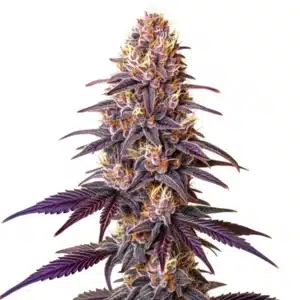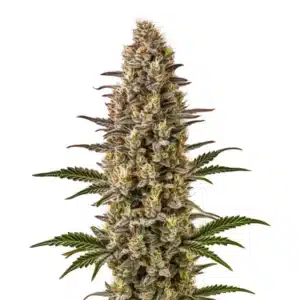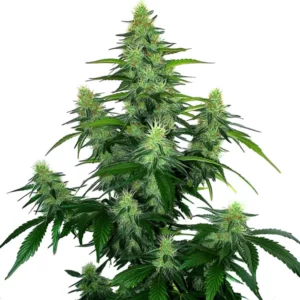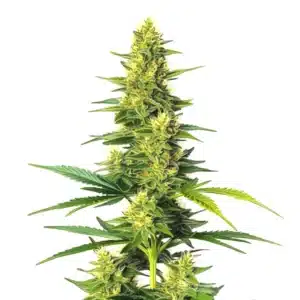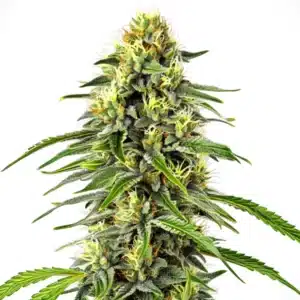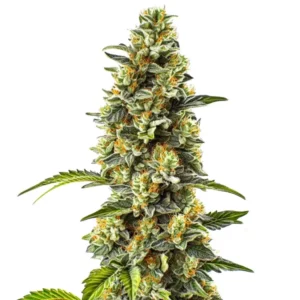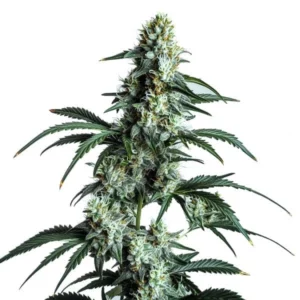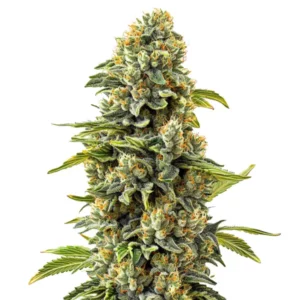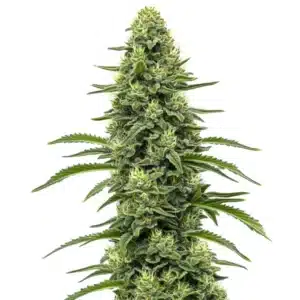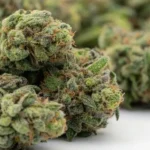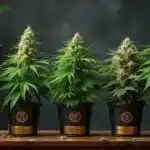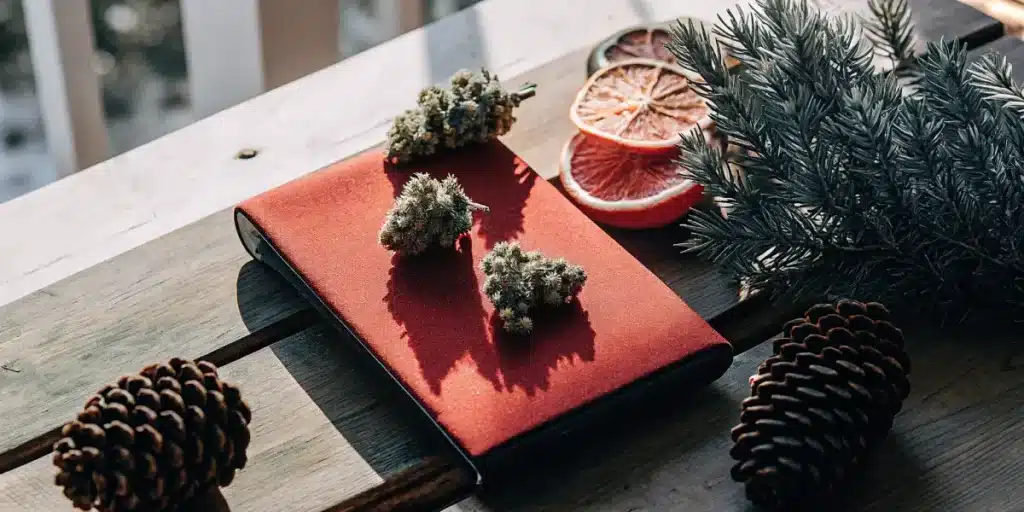
What Causes Weed to Smell Different?
Every cannabis enthusiast knows that distinct aroma when you crack open a fresh jar of weed. But have you ever wondered what causes weed to smell different? It’s not just one factor but a combination of elements that create that unique scent profile. From the type of strain to environmental factors, several things come into play.
At the heart of these intriguing aromas are compounds called terpenes. These natural compounds not only affect the smell but also contribute to the overall experience of consuming cannabis. Different cannabis strains have varying terpene profiles, which is why some might smell more like pine while others give off a fruity or even skunky aroma.
Recommended Strains
Lavender
|
|
THC | 20% (Medium) |
|
|
Type | Feminized |
|
|
Yield | Medium |
|
|
Phenotype | 60% Indica / 40% Sativa |
Super Lemon Haze
|
|
THC | 19% (Medium) |
|
|
Type | Feminized |
|
|
Yield | High |
|
|
Phenotype | 20% Indica / 80% Sativa |
Environmental factors play a crucial role too. The way a plant is grown, cared for, and harvested can significantly influence its scent. For instance, the same strain grown in two different places can smell different due to variations in soil, temperature, and humidity. Therefore, understanding the factors influencing cannabis aroma variability can help you make informed choices when selecting your next strain from Blimburn Seeds.
Another intriguing aspect to consider is the age of the cannabis. As cannabis ages, its terpene content can deteriorate, altering its scent profile. This natural degradation process means that older cannabis might not have the same aromatic intensity as a fresher batch. Proper storage can slow this process, preserving the terpenes for as long as possible.
The handling and trimming methods used during harvest can also impact the scent. Rough handling can bruise the plant, causing the terpenes to degrade more quickly. This is why expert growers handle cannabis with care, using precise trimming techniques to maintain the integrity of the plant’s aromatic compounds.
Terpenes in Cannabis Affecting Smell
Terpenes are aromatic compounds found in many plants, not just cannabis. In marijuana, they are responsible for the diverse range of scents you can experience. If you’ve ever wondered what causes weed to smell different, the answer lies in each strain’s unique terpene profile, which contributes to its signature aroma. These profiles are like a fingerprint, making every strain distinct.
Common terpenes include myrcene, limonene, and linalool. Myrcene tends to have an earthy scent with hints of musk, while limonene offers a citrusy aroma. Linalool, on the other hand, is known for its floral notes. These terpenes not only influence aroma but can also affect the strain’s effect on your body and mind.
- Myrcene: Earthy and musky, often found in strains like Blue Dream.
- Limonene: Citrusy, found in strains such as Super Lemon Haze.
- Linalool: Floral, seen in strains like Lavender.
Terpenes in cannabis affecting smell are a crucial aspect of the plant’s appeal, often guiding consumers in their choices. For example, someone seeking a relaxing experience might be drawn to strains high in linalool, while those looking for an energizing effect might prefer limonene-rich varieties. This sensory exploration is part of what makes cannabis enjoyable for many.
Interestingly, terpenes are not just about scent; they also have potential therapeutic benefits. Myrcene, for instance, has anti-inflammatory properties, while limonene is believed to have mood-enhancing effects. These dual roles of terpenes in cannabis affecting smell and health make them a significant area of study in both recreational and medicinal cannabis use.
Factors Influencing Cannabis Aroma Variability
While terpenes are fundamental, they are not the only factors influencing cannabis aroma variability. The environmental impact on weed scent profile is significant. Soil quality, sunlight, and even altitude can affect how a plant develops its aroma. For instance, a strain grown in a sunny, warm climate might have a more robust scent than one grown in cooler, shaded conditions.
Another factor is the curing process. After harvest, cannabis needs to be dried and cured properly to develop its full aroma. Improper curing can result in a loss of the delicate terpenes, leading to a less potent smell. This is why experienced growers pay close attention to this stage, ensuring their plants reach their aromatic potential.
Genetic diversity is also a critical element in different cannabis strains scent causes. Each strain has a unique genetic blueprint, determining its potential aroma profile. This genetic makeup interacts with environmental factors to create a wide array of scents, offering something for every preference.
Additionally, the use of fertilizers and nutrients can influence the aroma. Organic nutrients, in particular, can enhance terpene production, resulting in a richer scent. However, over-fertilization might lead to an undesirable chemical-like odor, highlighting the importance of balanced nutrient management in cultivation. If you’ve ever wondered what causes weed to smell different, factors like nutrients, genetics, and growing conditions all play a key role in shaping each strain’s unique aroma.
Promos & Deals
Why Do Some Weed Strains Smell Stronger?
Not all weed strains are created equal when it comes to scent strength. Some strains naturally produce more terpenes, which makes them smell stronger. For instance, strains like Sour Diesel and Skunk #1 are notorious for their intense aromas, which can fill a room even when just a small amount is present.
The cultivation practices also matter. Growers who optimize conditions for terpene production can amplify the natural scent of the plant. For example, maintaining the right humidity and temperature levels can enhance terpene development, resulting in a more robust aroma.
- Sour Diesel: Known for a pungent, fuel-like aroma.
- Skunk #1: Characterized by its strong, skunky smell.
- Gorilla Glue 4: Offers a mix of earthy and sour aromas.
Why do some weed strains smell stronger? The answer often lies in the unique combination of genetics and cultivation methods. Strains with a high concentration of terpenes emit stronger scents, making them particularly appealing to those who appreciate a rich aromatic experience.
Furthermore, the curing and storage process can affect the intensity of the aroma. Properly cured cannabis that is stored in ideal conditions retains its scent longer, ensuring that the fragrance remains as potent as the day it was harvested. This attention to detail in post-harvest processes is key to preserving and enhancing the natural aromas of cannabis.
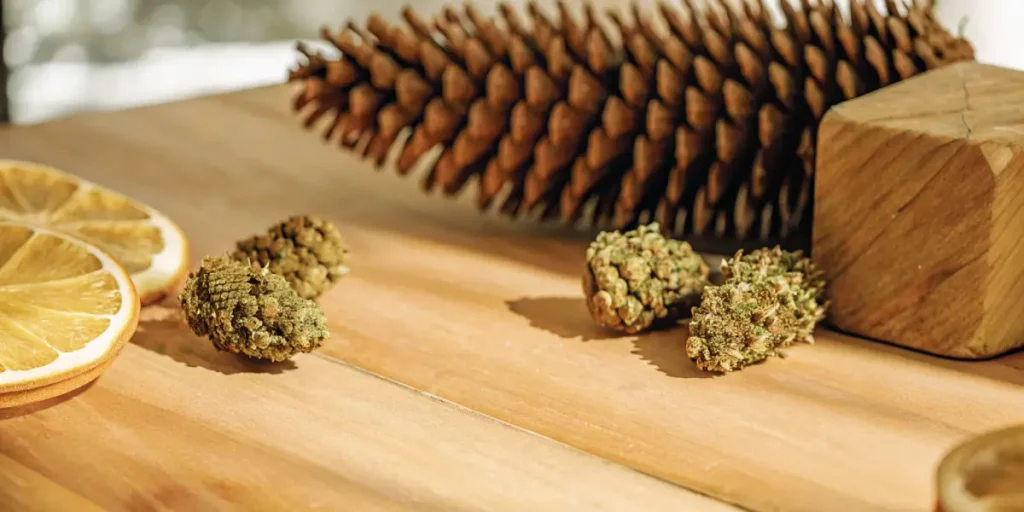
Environmental Impact on Weed Scent Profile
The environment where cannabis is grown can significantly impact its scent profile. For those wondering what causes weed to smell different, factors like temperature and humidity play a crucial role. High humidity levels can lead to mold, which not only affects the plant’s health but can also alter its aroma. Conversely, too little humidity can dry out the plant, reducing its scent.
Soil quality also makes a difference. Nutrient-rich soil supports healthy terpene production, leading to more fragrant plants. Some growers even use specific nutrients to boost certain terpenes, enhancing the desired aroma. This is why two plants of the same strain might smell different if grown in different soils.
Light exposure plays a vital role in the environmental impact on weed scent profile. Adequate lighting provides the energy necessary for plants to synthesize terpenes, directly influencing the strength and complexity of the aroma. Adjusting light cycles to mimic natural sunlight patterns can help maximize terpene production.
The microclimate, including factors like air circulation and CO2 levels, can also affect the aroma. Good airflow ensures that plants can “breathe,” facilitating terpene synthesis and preventing mold growth. This holistic approach to managing environmental conditions is essential for cultivating aromatic cannabis.
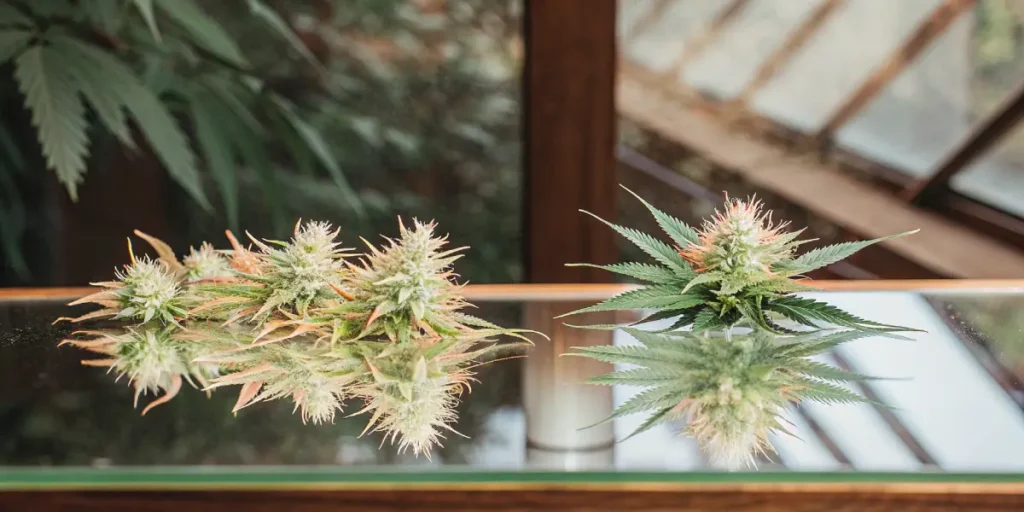
FAQs about what causes weed to smell different
How do terpenes influence the effects of cannabis?
Terpenes do more than just provide aroma. They interact with cannabinoids like THC and CBD to influence the overall effects of the strain, helping explain what causes weed to smell different from one variety to another. This interaction is known as the “entourage effect.” For example, a strain high in myrcene might enhance relaxation, while one rich in limonene could boost your mood.
Choosing a strain based on its terpene profile can help tailor your experience. If you’re looking for something relaxing, seek strains high in linalool. For an uplifting experience, those with a citrusy limonene profile might be your best bet. Blimburn Seeds offers a variety of strains rich in different terpenes, allowing you to select based on your desired outcome.
Knowing terpenes in cannabis affecting smell and effects can enhance your appreciation of different strains. Terpenes can modulate the psychoactive properties of THC, leading to varied experiences even with strains of similar THC content. This makes terpene knowledge invaluable for cannabis consumers.
Moreover, the therapeutic potential of terpenes is gaining recognition. Some terpenes have anti-anxiety or anti-depressant properties, offering additional reasons to consider terpene profiles when selecting cannabis. This interplay between aroma and effect underscores the complexity and richness of the cannabis plant.
Why does my cannabis smell different after a few weeks?
Cannabis can change its scent over time, especially if not stored properly. Exposure to air, light, and fluctuating temperatures can degrade terpenes, altering the original aroma. This is why it’s essential to store your weed in a cool, dark place, preferably in an airtight container.
Additionally, ongoing curing can change the scent profile. Some strains continue to develop their aroma after the initial cure. This means that what you smell immediately after purchase might differ from what you experience a month later. Keeping your stash well-preserved ensures you enjoy the full aromatic profile for as long as possible.
Knowing what causes weed to smell different over time can help in preserving its quality. Temperature fluctuations can lead to condensation inside containers, which may encourage mold growth and alter the aroma. Maintaining a consistent storage environment is vital for retaining the desired scent.
It’s also worth noting that the breakdown of chlorophyll and other plant compounds during curing can lead to changes in aroma. This process can transform harsher, grassy smells into more pleasant, nuanced scents, illustrating the importance of patience and proper technique in cannabis storage.
Are there strains with minimal scent?
Yes, some strains are bred to have a milder aroma, catering to those who prefer a less pungent experience. These strains usually have lower terpene concentrations, resulting in a subtler scent. For instance, certain CBD-dominant strains often have a more understated aroma.
If discretion is a priority, consider strains known for their milder scent profiles. Blimburn Seeds offers options that cater to this preference, allowing you to enjoy cannabis without overwhelming odors. Remember that environmental factors during cultivation can also influence the final scent strength.
For those wondering why do some weed strains smell stronger while others are more subdued, the answer lies in their terpene content. Strains with fewer terpenes naturally emit a softer aroma, making them ideal for discreet consumption or those sensitive to strong scents.
Additionally, environmental and genetic factors influence scent strength. Careful breeding and selection can yield strains that meet specific aromatic preferences, providing a wide range of options for consumers seeking both bold and subtle experiences.
Can I enhance the scent of my cannabis plants?
Absolutely, growers can enhance the terpene profile of their plants through various methods. Optimal growing conditions, including the right balance of nutrients, light, and humidity, play a critical role. Using organic nutrients can also boost terpene production, resulting in more aromatic plants.
Some growers swear by certain supplements or techniques to enhance aromas. However, it’s crucial to research and understand the needs of your specific strain. Experimenting with different methods can lead to discovering what works best for enhancing the scent of your cannabis plants.
Factors influencing cannabis aroma variability can be managed to amplify the scent. Techniques like stress training, where plants are gently manipulated to increase terpene production, are popular among experienced growers aiming for a more potent aroma.
Moreover, incorporating specific companion plants in the growing area can indirectly enhance cannabis scents. Certain plants release chemicals that can stimulate terpene synthesis in cannabis, offering a natural method to boost aroma without altering the plant’s genetic makeup.
What are some recommended strains for a potent aroma?
For those seeking a powerful scent experience, certain strains are known for their intense aroma. Blue Dream, for example, offers a fruity and sweet scent profile, making it a favorite among many. Super Lemon Haze is another excellent choice, providing a fresh, citrusy aroma.
Gorilla Glue 4 from Blimburn Seeds is renowned for its complex scent, combining earthy, sour, and pungent notes. These strains are perfect for those who appreciate a robust aromatic experience and can be found among the diverse offerings at Blimburn Seeds, making them accessible for any cannabis enthusiast.
Different cannabis strains scent causes are often rooted in their terpene composition, with some strains like Pineapple Express offering a delightful tropical aroma that stands out for its uniqueness. Such strains provide a sensory journey, elevating the cannabis experience beyond just consumption.
Besides, strains like Strawberry Cough captivate with their berry-like fragrance, appealing to those with a penchant for fruity aromas. These aromatic profiles not only enhance the enjoyment of cannabis but also offer insights into the diverse world of terpenes and their effects.


